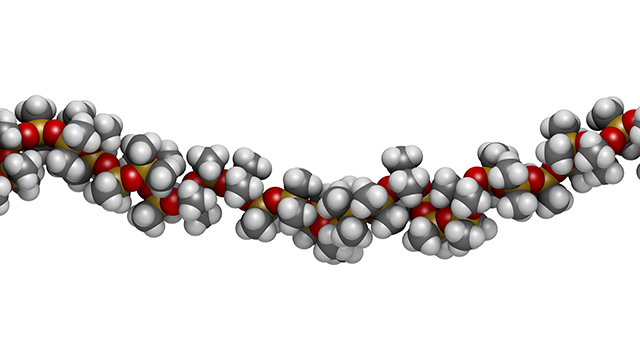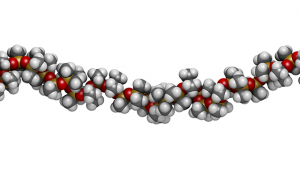
Dimethylpolysiloxane sources, health risks
Tuesday, October 24, 2017 by Earl Garcia
http://www.naturalpedia.com/dimethylpolysiloxane-sources-health-risks.html

Dimethylpolysiloxane, also commonly called polydimethylsiloxane, is a toxic industrial chemical that is partially derived from silicone. The harmful compound is characterized by ts vinegar-like odor and is traditionally used in the manufacturing of various commercial products such as silicone lubricants, polishes and mold expulsion agents as well as grease, bathroom caulk or sealants, defoaming agents and cosmetic products. The silicone derivative is also commonly found in heat transfer fluids, aquarium sealant and kinetic sand as well as silly putty and even breast implants, a Stop Poisoning Us article reveals.
The chemical can also be traced in small amounts in fast food items. A number of chain restaurants – including McDonalds, Wendy’s and Subway as well as Domino’s, Taco Bell and Jack-in-the-Box – are allegedly using the compound as a food preservative. The harmful ingredient is classified as a silicone polymer and is noted for its non-biodegradable properties. Due to this, dimethylpolysiloxane may take up to 100 years to completely decompose, according to an entry posted on the Is It Bad For You website.

Harmful effects that can be caused by dimethylpolysiloxane
Dimethylpolysiloxane is heavily used in the treatment of retinal detachment and retina-related eye infections. However, an entry posted on the Tablet Wise website discusses that the compound may potentially result in dangerous side effects including cataract, hypotony and corneal abrasion. A previous animal study has also revealed that exposure the compound has resulted in corneal edema and angle-obstruction glaucoma in dogs. The Centers for Disease Control and Prevention (CDC) recommends that people exposed to the hazardous chemical wash their eyes for a few minutes and visit a physician afterwards. The CDC also stresses the use of protective eye gear in order to prevent exposure.
Likewise, a Science Direct article has noted that the chemical is notoriously detrimental to the respiratory tract if it is injected directly into a vein. The article notes that illicit dimethylpolysiloxane injection may cause acute pneumonitis, diffuse alveolar hemorrhage, and acute respiratory distress syndrome. Other symptoms such as dyspnea, fever and cough as well as blood-stained mucus, hypoxia and altered mental status may occur within 72 hours following injection. According to the CDC, people who inhaled the chemical should go to an area with fresh air and rest.
The compound is also known to affect skin health. The CDC recommends removing clothing articles contaminated by the toxic ingredient and washing the skin area with plenty of water. Furthermore, the health agency stresses that dimethylpolysiloxane is potentially harmful to the digestive tract. The CDC states that ingesting the hazardous substance may result in nausea, vomiting and diarrhea. The CDC discourages people from inducing vomiting. Instead, the health agency has emphasized that people exposed to the chemical should thoroughly wash their mouth with water.
Body systems harmed by dimethylpolysiloxane
Dimethylpolysiloxane is particularly detrimental to eye health. Likewise, the toxic food preservative is known to cause adverse effects on the respiratory system. The harmful compound is also known to negatively affect the skin and the digestive tract.
Where to learn more
- Anti-foaming agent found in Chicken McNuggets
- Ten horrifying ingredients that prove McDonald’s is not fit for consumption
- Chick-fil-A sandwiches contain MSG, HFCS and anti-foaming chemicals; eating them is a sin in the eyes of God
- Taco Bell beef faked? No more than the rest of the FDA-approved toxic food supply
- The ‘mystery ingredients’ in fast food are actually industrial chemicals
Summary
Dimethylpolysiloxane causes cataract, hypotony and corneal abrasion.
Dimethylpolysiloxane triggers acute pneumonitis and acute respiratory distress syndrome.
Dimethylpolysiloxane exposure may also result in diffuse alveolar hemorrhage, fever and hypoxia.
Dimethylpolysiloxane raises the odds of dyspnea, altered mental status and blood-stained mucus.
Dimethylpolysiloxane causes skin irritations, nausea, vomiting and diarrhea.
Dimethylpolysiloxane is particularly detrimental to both the eyes and the respiratory tract.
Dimethylpolysiloxane is also especially harmful to both the skin and the digestive system.
Sources include:
Tagged Under: Tags: Dimethylpolysiloxane





